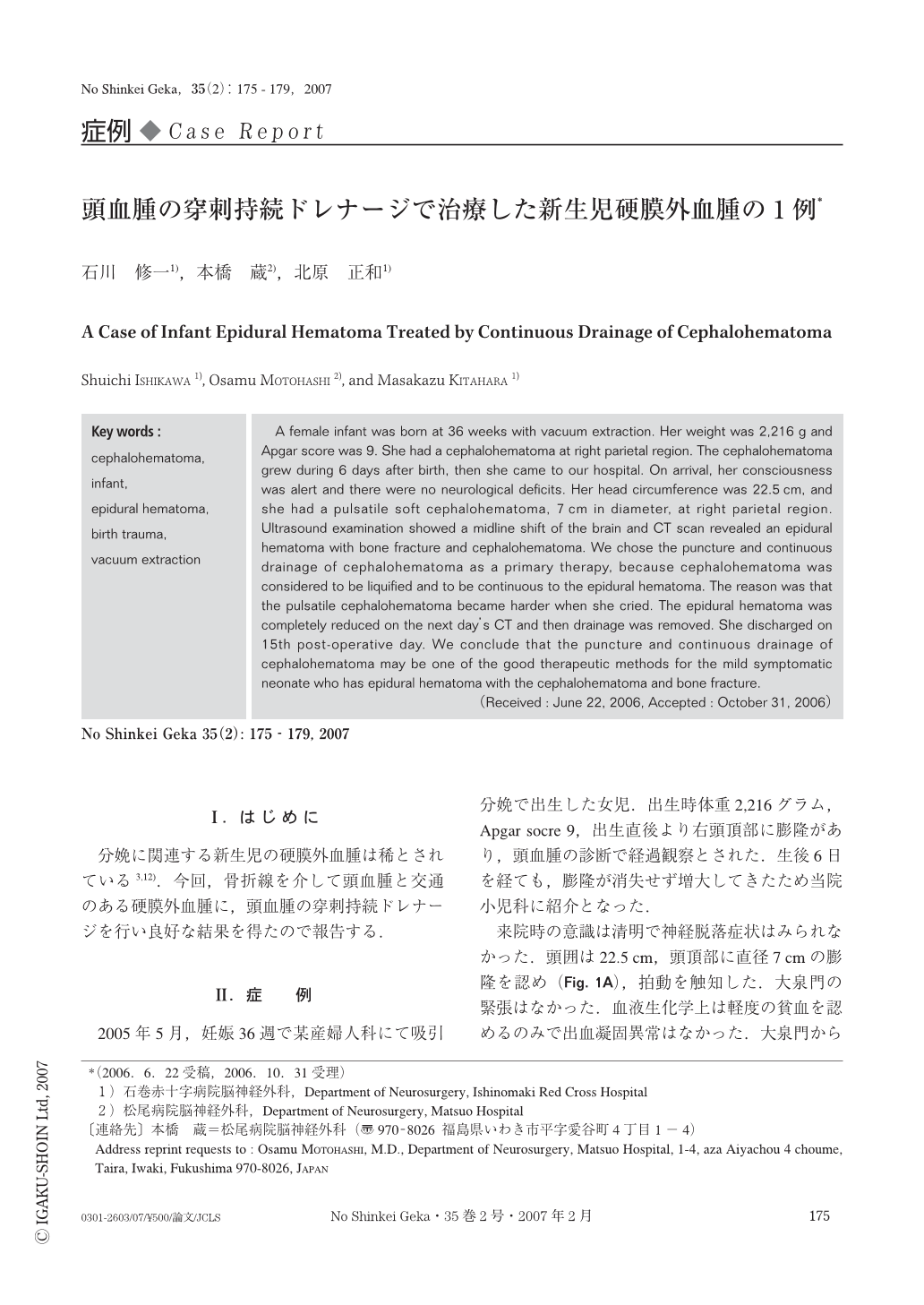Japanese
English
- 有料閲覧
- Abstract 文献概要
- 1ページ目 Look Inside
- 参考文献 Reference
Ⅰ.はじめに
分娩に関連する新生児の硬膜外血腫は稀とされている3,12).今回,骨折線を介して頭血腫と交通のある硬膜外血腫に,頭血腫の穿刺持続ドレナージを行い良好な結果を得たので報告する.
A female infant was born at 36 weeks with vacuum extraction. Her weight was 2,216 g and Apgar score was 9. She had a cephalohematoma at right parietal region. The cephalohematoma grew during 6 days after birth, then she came to our hospital. On arrival, her consciousness was alert and there were no neurological deficits. Her head circumference was 22.5cm, and she had a pulsatile soft cephalohematoma, 7cm in diameter, at right parietal region. Ultrasound examination showed a midline shift of the brain and CT scan revealed an epidural hematoma with bone fracture and cephalohematoma. We chose the puncture and continuous drainage of cephalohematoma as a primary therapy, because cephalohematoma was considered to be liquified and to be continuous to the epidural hematoma. The reason was that the pulsatile cephalohematoma became harder when she cried. The epidural hematoma was completely reduced on the next day's CT and then drainage was removed. She discharged on 15th post-operative day. We conclude that the puncture and continuous drainage of cephalohematoma may be one of the good therapeutic methods for the mild symptomatic neonate who has epidural hematoma with the cephalohematoma and bone fracture.

Copyright © 2007, Igaku-Shoin Ltd. All rights reserved.


